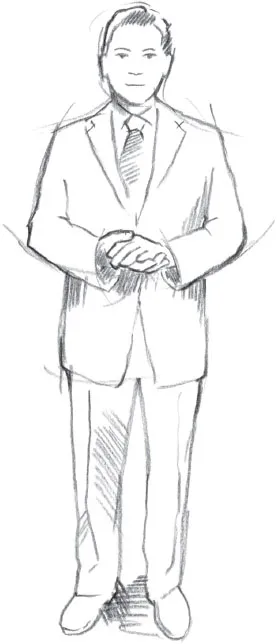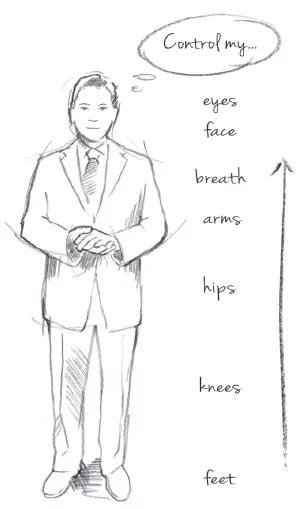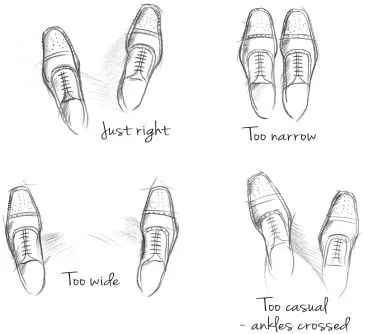
eBook - ePub
The Articulate Advocate
Persuasive Skills for Lawyers in Trials, Appeals, Arbitrations, and Motions
- 248 pages
- English
- ePUB (mobile friendly)
- Available on iOS & Android
eBook - ePub
The Articulate Advocate
Persuasive Skills for Lawyers in Trials, Appeals, Arbitrations, and Motions
About this book
Master the Art of Persuasion in the Legal Arena.
The Articulate Advocate equips lawyers with the persuasive skills essential for success in trials, appeals, arbitrations, and motions. Combining legal expertise with communication know-how, this guide provides immediately useful techniques to persuade judges, juries, and arbitrators.
Discover how to channel adrenaline, capture attention, master body language, and structure compelling arguments. Based on 25 years of coaching experience, this edition integrates insights from human factors, gesture studies, linguistics, neuroscience, and sports psychology to give litigators a competitive edge.
- Master nonverbal communication to project confidence and credibility.
- Develop vocal techniques for clear and impactful delivery.
- Structure arguments for maximum persuasiveness.
Frequently asked questions
Yes, you can cancel anytime from the Subscription tab in your account settings on the Perlego website. Your subscription will stay active until the end of your current billing period. Learn how to cancel your subscription.
At the moment all of our mobile-responsive ePub books are available to download via the app. Most of our PDFs are also available to download and we're working on making the final remaining ones downloadable now. Learn more here.
Perlego offers two plans: Essential and Complete
- Essential is ideal for learners and professionals who enjoy exploring a wide range of subjects. Access the Essential Library with 800,000+ trusted titles and best-sellers across business, personal growth, and the humanities. Includes unlimited reading time and Standard Read Aloud voice.
- Complete: Perfect for advanced learners and researchers needing full, unrestricted access. Unlock 1.4M+ books across hundreds of subjects, including academic and specialized titles. The Complete Plan also includes advanced features like Premium Read Aloud and Research Assistant.
We are an online textbook subscription service, where you can get access to an entire online library for less than the price of a single book per month. With over 1 million books across 1000+ topics, we’ve got you covered! Learn more here.
Look out for the read-aloud symbol on your next book to see if you can listen to it. The read-aloud tool reads text aloud for you, highlighting the text as it is being read. You can pause it, speed it up and slow it down. Learn more here.
Yes! You can use the Perlego app on both iOS or Android devices to read anytime, anywhere — even offline. Perfect for commutes or when you’re on the go.
Please note we cannot support devices running on iOS 13 and Android 7 or earlier. Learn more about using the app.
Please note we cannot support devices running on iOS 13 and Android 7 or earlier. Learn more about using the app.
Yes, you can access The Articulate Advocate by Brian K. Johnson,Marsha Hunter in PDF and/or ePUB format, as well as other popular books in Law & Law Theory & Practice. We have over one million books available in our catalogue for you to explore.
Information
CHAPTER ONE
Your Body

For advocates, the name of the game is to look confident, comfortable, and credible. The way you stand, move, breathe, gesture, and focus your gaze significantly affects how a listener perceives you. As judges, jurors, or arbitrators listen to what you say, they unconsciously scrutinize your physical behavior and assess your credibility. If your demeanor signals nervousness and discomfort, you will be less convincing. But if you act confident and enthusiastic in your role as zealous advocate, you will be persuasive. To achieve this initial goal—looking dynamically at ease and believable at all times, even when feeling nervous—requires a fail-safe technique for controlling your body.
Understanding the function of adrenaline is of paramount importance to this process; few things have greater impact on an attorney’s performance. Feelings of anxiety and excitement inevitably trigger the flow of adrenaline, which sends excess energy coursing through your system. This leads many advocates to pace or sway, take fast and shallow breaths, gesture awkwardly, and fidget with their hands. Even the eyes are affected by adrenaline: nervous energy makes it hard for the eyes to focus, and they tend to flit around the room, depriving the listener of eye contact and the advocate of concentration.
By learning to control your breath, as well as the movement of your legs, arms, hands, and eyes, you can channel the power of adrenaline and dictate how your body responds to it.
With guided practice, you will discover how to instruct your body to act in an appropriate and effective way. You can gain conscious control of your body by making desired behaviors part of a performance ritual. You will look comfortable and confident from the very beginning of every presentation, regardless of how you may feel.
Understanding Adrenaline
Adrenaline is a natural hormone dispensed by the adrenal glands. It flows through your body when your instinct signals a need for extra energy, perhaps to defend yourself, run away, or respond to the pressure of performance.
Performance pressures often take a positive form, such as excitement or anticipation. When athletes talk of “being pumped” for the big game, they are responding to that adrenaline being pumped, literally, by their bodies in anticipation of performance. Adrenaline also assists athletes by producing the extra energy needed to throw a ball farther or run faster, and by helping them to concentrate and focus the mind in the heat of competition. Likewise, adrenaline can be a positive factor for the advocate.
The body also releases adrenaline in response to negative pressures, such as nervousness, anxiety, and panic. Excess nervous energy often is referred to as the fight-or-flight syndrome, because adrenaline energizes and animates muscles in our arms to help us fight and in our legs to help us flee.
Although our need to outrun predators has been reduced in modern society, thankfully, we’re all familiar with adrenaline-induced energy; it makes your limbs tremble. If you stand up to speak and feel your hands shaking, this is the result of adrenaline preparing your arm muscles to fight. If you feel your knees knocking, adrenaline is pumping extra energy into your thighs and quadriceps to prepare you to run from a threat. The trembling occurs because every muscle in your body is paired with another muscle—for example, biceps and triceps work together to move your forearm—and when adrenaline energizes both simultaneously, they tense and pull against each other, causing your arms or legs to shake.
The common form of nervousness known as “having butterflies in your stomach” takes place in the muscles of respiration. The flutter of those metaphorical butterflies occurs when the diaphragm and intercostal muscles in the ribs pull against each other in response to adrenaline. As you speak, you feel a trembling, which sometimes becomes audible. Your voice shakes or cracks when this excessive muscular tension robs you of adequate breath support, without which you will not be loud enough to be heard. Chances are good you will be so distracted by those butterflies that you won’t be your most articulate, persuasive self.
For many advocates, adrenaline pumps because of an ever-shifting balance between excitement and nervousness. It is not only invigorating to confront the challenge of speaking effectively, it is also nerve-wracking—often just a little, sometimes quite a lot. Even seasoned lawyers admit that they experience this phenomenon. Although it is impossible to predict how much adrenaline you will generate at any given moment, it is guaranteed that you will feel the effect of at least some. Regardless of the cause of your adrenaline rush, the secret is to channel its corresponding energy in the most effective and appropriate way.
If adrenaline isn’t channeled and released, it triggers various inappropriate, unconscious mannerisms that make you look and feel ill at ease. However, if you learn to recognize the impulses to fight, flee, or freeze, you can counter adrenaline’s negative effects by proactively gaining control of specific parts of your body.
You may feel an extra rush of adrenaline as you prepare to face your fact finder or witness. Conscious control of your behavior can be established by counting several seconds of silence before you begin to speak. During this silence, run through a short physical checklist in order to prepare your body and focus your mind. Olympic athletes use just such an anticipatory silence to prepare to dive into a pool, ski down a mountain, or race around a track.
Creating Your Own Performance Ritual
In 1992, a 72-year-old retiree walked onto a basketball court in Riverside, California, and made 2,750 consecutive free throws without a miss. Dr. Tom Amberry, who had such confidence in his technique that he brought along ten witnesses who signed affidavits for his submission to the Guinness Book of World Records, readily admits he is not a great athlete and never was. So how did he accomplish such a feat? He had a great technique. In his book Free Throw: 7 Steps to Success at the Free Throw Line, he describes the mental and physical ritual that gave him such astonishing control and consistency. Every move Dr. Amberry made prior to each shot was part of an unvarying routine. During the silence between shots, he went through a physical checklist. How he planted his feet, how he breathed, how many times he bounced the ball, how his fingers held the ball, how he focused his eyes on the basket—every move was precisely the same 2,750 times. Because his ritual was so consistent, he achieved remarkable results on the basketball court. As demonstrated by Amberry’s amazing accomplishment, consistent ritual can help you achieve similar success as an advocate.
Sports psychologists teach that if you want to perform at a high level, you need a consistent mental and physical ritual on which to base your performance. The function of this ritual is to enable the mind, through repetition and practice, to control the body, and to enable the body to control the mind. Together, body and mind help control emotion.
To achieve a consistently effective style, devise and refine a physical ritual for use every time you stand up to speak. In time, this routine will become “second nature”—behavior that looks natural, but is actually the result of technique and diligent practice.
Reliance on a physical ritual frees your brain’s prefrontal cortex (the area of your brain responsible for higher intellectual function) from being distracted by pacing, fidgeting or gesturing, and it ensures that your body’s actions will be governed by your motor cortex, the brain’s overseer of natural automatic functions. Your prefrontal cortex can then focus on more important things, such as what you want to say and how you want to say it. By ritualizing your physical actions, you engage your instinct to move and gesture naturally.
For your own ritual, start with your feet and move up your body to your head. Use a mental checklist to position and align your feet, knees, hips, breath, arms, face, and eyes. Running through this quick checklist will help you get control of your body, positioning and aligning yourself for optimum performance every time you stand to speak.

Think from the bottom up, focusing briefly on each part of your body. Use your own body as a mnemonic device to memorize your physical ritual.
Controlling Your Lower Body
In most sports, athletes start by planting their feet in the proper stance. The golfer adopts a stance and then swings a club. The baseball player ritualistically plants both feet in the batter’s box and then swings a bat. The basketball player finds a stance on the free throw line and then shoots. As an advocate, begin by planting your feet on the courtroom floor.
Plant Your Feet
Stand with your feet a comfortable distance apart. Don’t place your feet so close together that your shoes touch; this stance is too narrow for a solid, comfortable foundation. Do not adopt a stance that is too wide or you will look like a gunslinger in a Western; somewhere between the extremes of too narrow and too wide is a stance that is just right. Avoid standing with your feet in perfect parallel position, as if you are gliding along on skis. Such perfect symmetry can make you look slightly square and wooden, like a soldier at attention. Don’t cross your ankles, which looks too casual. Instead, try standing with your feet slightly asymmetrical and out of perfect alignment with each other. Slight asymmetry in the stance makes your body look more relaxed.

Stand up and experiment right now with finding the right stance for you. Better yet, stand in front of a floor-length mirror so you can see how your stance looks. Once you are satisfied, use it every time you stand up in court. Soon it will become second nature, and your body, just like an athlete’s, will do it automatically, without your needing to think about it.
Adopt your stance in the moment before you speak. Do not utter a word until you have planted your feet and are standing still. Then, pause for another moment, take a breath, and feel the floor.
Stand Still
Newton’s first law of motion also applies to advocacy: A body at rest tends to remain at rest; a body in motion tends to remain in motion. When you plant your feet and stand still, you look calm, comfortable, and in control, and your body will tend to stay at rest. If you start talking while your feet are still moving, your body tends to stay in motion—and may never stop. Random movement will make you appear nervous and ill at ease. Because adrenaline energizes your leg muscles, it is natural—but undesirable—to unconsciously rock, sway, pace, or shuffle your feet. So obey Newton’s Law: plant your feet and stand still at the beginning of a presentation.
Flexible Knees
The next step in the ritual is to align and balance your knees and hips over your feet. Your knees should feel flexible. Don’t lock your knees by pushing them backward, tightening the thigh muscles and drawing your kneecaps upward. The desirable sensation of flexibility is a feeling of the knee joint floating, perfectly balanced. Think of it as “subway knees,” similar to the knee adjustment you make as the door closes and the bus or subway car is about to move. You flex your knees ever so slightly to maintain your balance when you feel forward movement. The adjustment is subtle and virtually invisible. Your knees do not bend as in a crouch, but they adjust enough to flexibly absorb the forward lurch of the train as it pulls out of the station. With flexible knees, your legs will feel comfortable, even when you are standing still for a long time.

Stand up and experiment briefly to find this subtle feeling. Lock your knees backward and feel the sensation you want to avoid. Crouch slightly to move the knees in the opposite dire...
Table of contents
- Cover
- Title Page
- Copyright
- Contents
- Dedication
- Foreword
- Preface
- Introduction
- Chapter One: Your Body
- Chapter Two: Your Brain
- Chapter Three: Your Voice
- Chapter Four: How to Practice
- Chapter Five: Applying Your Skills at Trial
- Appendices
- Bibliography
- Index
- About the Authors